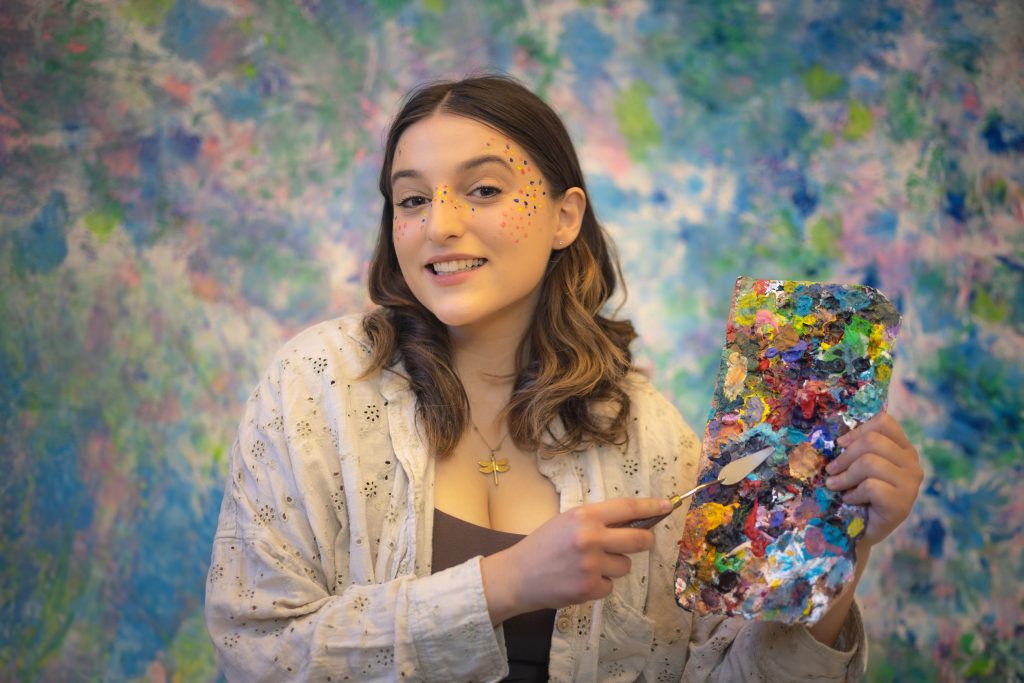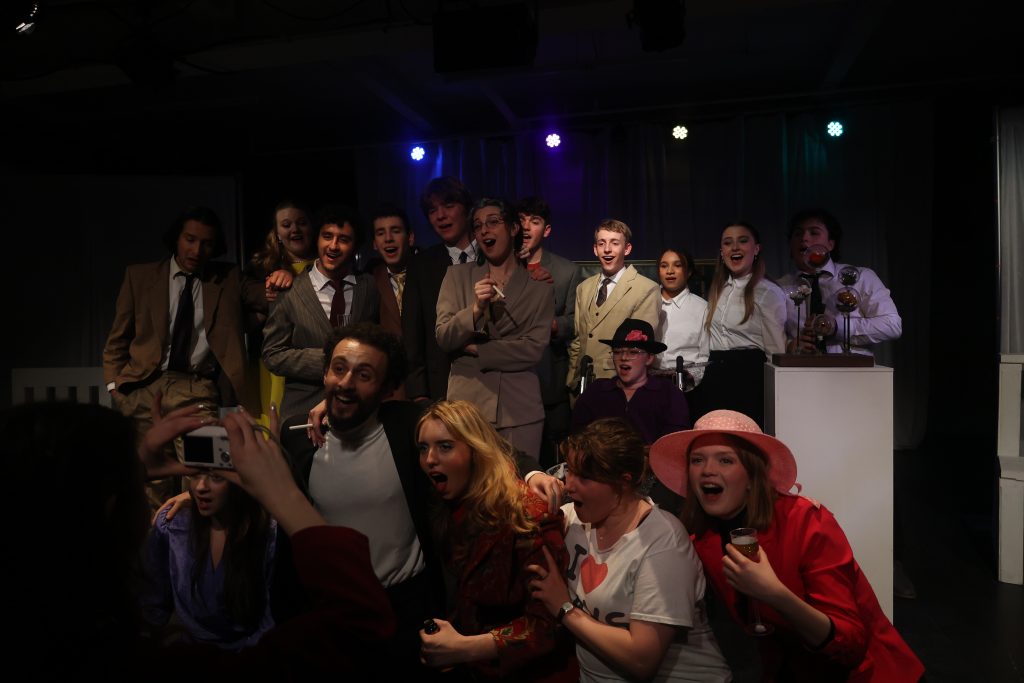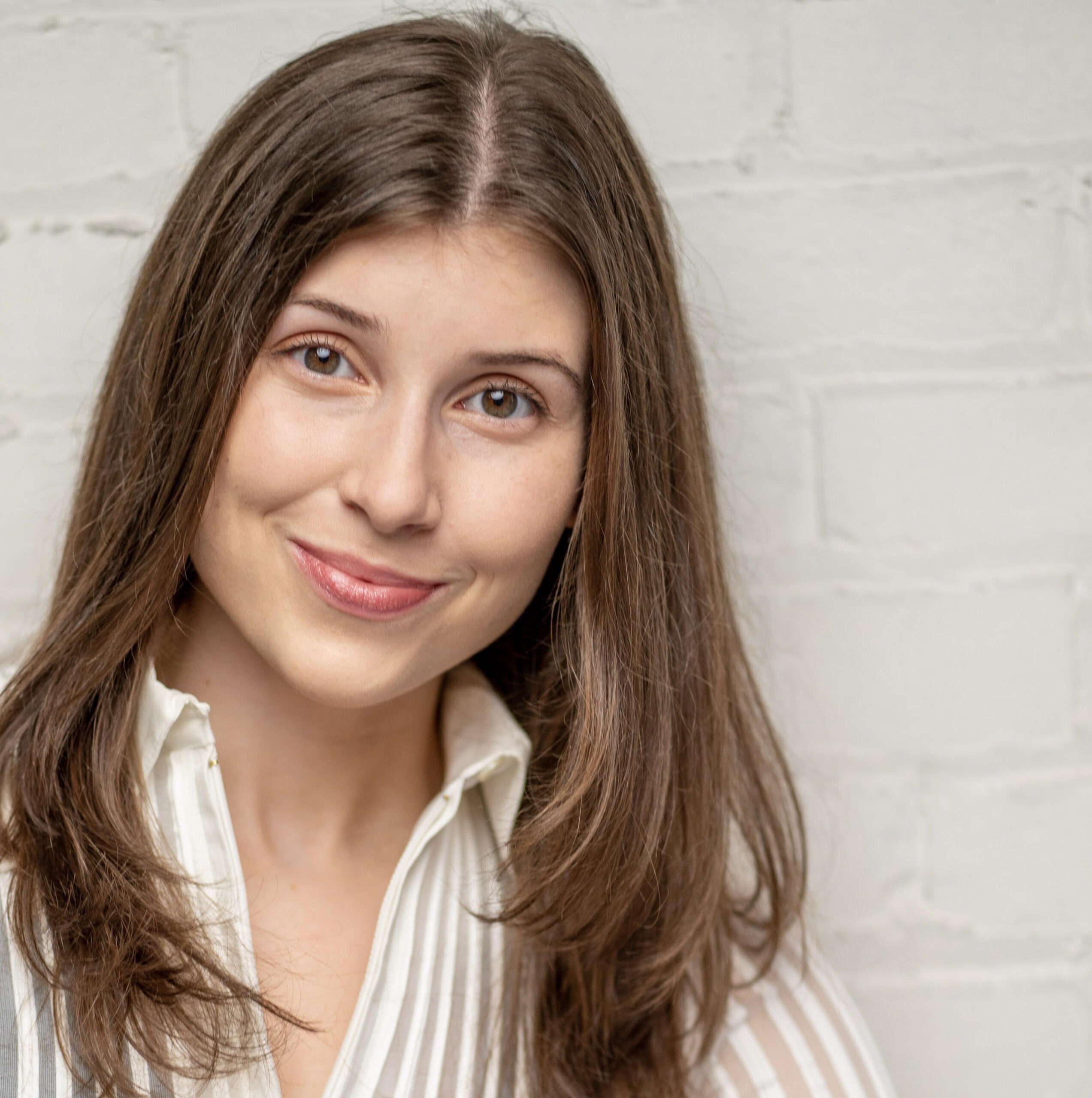Spend a Sunday with Sondheim: Rachel Rusonik on ‘Sunday in the Park with George’

Student-run theatre strikes again! This January, Queen’s Musical Theatre (QMT) is bringing the renowned Sunday in the Park with George—music and lyrics by Stephen Sondheim; book by James Lapine—to Kingston. With over 100 folks involved, the organization has been working for many months on bringing this partially immersive (more on that later) musical to the stage. Director Rachel Rusonik was kind enough to sit down with me during the ever-busy tech week last Thursday to speak about the production.
This interview has been edited for length and clarity.
Settling into the morning interview with a coffee cupped between my hands felt extremely fitting as I began chatting with the very warm Rusonik. As I sipped away, our comfortably cozy conversation soon shifted to the history of Sunday in the Park with George. “Stephen Sondheim had just put out Merrily We Roll Along on Broadway,” said Rusonik. “And transparently, it flopped a little bit. There’s all these theories as to why it happened, but James Lapine, who wrote the book for Sunday in the Park with George, came up to Stephen Sondheim and basically said that he had no idea why the musical flopped. And they decided they would work together to create Sunday in the Park with George… So they made this musical that they didn’t think had much hope at all. But is now viewed as Stephen Sondheim’s greatest masterpiece or at least his most personal piece.”
The musical itself is inspired by the artist Georges Seurat and his famous painting A Sunday Afternoon on the Island of La Grande Jatte. “It’s about the several Sundays leading up to his creation of the painting and the two years that he was creating it, from 1884 to 1886. He created the painting in his 20s and unfortunately passed away at the age of 31… Ultimately the show is just a love letter to art and what goes into creating it.”
Despite his passing at such a young age, Rusonik maintains that the musical is about life. “Sunday in the Park with George, at its core, reminds us that art is not only a means of immortalizing people and the things that we do, but [is] also new perspectives and the way that we feel. In a world of constant ephemeral interactions where everyone has a voice and people seldom listen, it is this reflective and immortalizing ability that makes art stand out as the greatest vessel of our shared humanity.”
Bringing forth a production that highlights appreciating the arts throughout life was a very intentional choice by QMT. “We saw the cut of the fine arts program last year… That was just the first of many slashes made to the arts at Queen’s amidst the budget cuts. And I think it’s more important than ever right now that we put on a musical that highlights, both for artists and those who don’t necessarily draw, paint, or write, but who maybe dabble or just appreciate looking at a painting—or could learn to—what the importance of the arts is, especially right now more than ever.”

But while emphasizing the significance and influence the arts can have, there are themes of the show that posed a challenge. “Sunday in the Park with George can be seen as one of those pretentious plays that’s mostly for artists. And I wanted to make sure that especially now in the situation we have at Queen’s, we were finding a way to reach people who don’t necessarily gravitate towards a play of that nature… So one of the things we added is choreography. We have an amazing choreographer, Marlee Schwartz, and she is also a fourth year in sciences at Queen’s, and we just thought together that that would really help bring out the emotion of the piece and also just bring in another art form because if we’re putting on a play about loving art, why not include as many as possible?”
Additionally, the action moves beyond the stage to a select few audience members. “But we’ve also made it so that every seat in the front row of the show is participatory… When we have actors pulling people on stage or offering them business cards or going out to shake their hands, audiences know that that could go very wrong and actors are—it pushes them out of their comfort zones in a way that reminds everyone why we came here to do this live and why theatre is so important and why the risk-taking of the arts is what brings its humanity to it in a world of increasing AI and of arts cuts and everything that threatens them.”
In bringing this vibrant production to life on the stage, noting the value of the more-than-100-person production team is essential. “The whole show is about the fact that we often forget the artist behind the painting, and I think the production team are the artists we often forget behind almost every show, which I find to be quite unfortunate just because they’re not front-facing, but it really wouldn’t be possible without any of them.”
Amongst this large team are brand-new production positions and changes to existing ones. “We added a new role for this specific show called Head of Scenic Arts [Annabelle Brophy] and a scenic arts team who have created all of the paintings for the show… We also have our band who very unfortunately, and it disheartens all of us, they are not able to fit into the space of this venue because of the nature of the venue we ended up in. But they spent days and days recording music for the show. And I could not be more grateful for them. We only had three people in the band [Keyboard: Gailey Monner, Percussion: Hannah Singer, Violin: Sarah Merithew] for what should have been a 13-piece orchestra and they sat there layering every single instrument [together] and adding synthetic instruments for what they do not have. And it sounds absolutely beautiful.”
As director, Rusonik feels especially passionate about the collaboration involved. “I think the most rewarding part has been experiencing what it feels like to be a vision holder, but not in control and see how that vision can thrive and expand beyond what I could have possibly dreamed when I saw what every student who is part of the production is capable of creating when they’re given the means to do so.”
Rachel Rusonik is a drama and English student at Queen’s University who has been heavily involved in the student-theatre scene at Queen’s since her second year. She has taken on a diverse variety of theatre roles including acting, production management, costume design, playwriting, and marketing, and has most recently found herself at home directing Queen’s Musical Theatre‘s ‘Sunday in the Park with George’ and soon to be directing Two Rabbit One Hat‘s (a new student theatre company’s) production of ‘Macbeth’ this winter.
‘Sunday in the Park with George’ opens tomorrow evening. More information can be found here.
